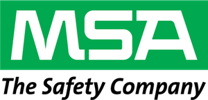Personal protective equipment, commonly referred to as “PPE”, is equipment worn to minimize exposure to a variety of hazards. Examples of PPE include such items as gloves, foot and eye protection, protective hearing devices (earplugs, muffs) hard hats, respirators and full body suits.
Head Protection
Body Protection
Body protection is paramount on construction sites, where the risk of injuries to the torso and vital organs exists. Wearing appropriate gear such as vests or full-body suits provides a crucial layer of defense, safeguarding workers from potential hazards and ensuring their overall safety on the job.
Foot Protection
Foot protection is crucial on sites to guard against potential injuries from falling objects, sharp materials, or uneven surfaces. Wearing sturdy, safety-rated footwear provides a vital layer of defense, ensuring the safety and well-being of workers by preventing foot-related accidents in diverse work conditions.
Fall Protection
Fall protection is a critical aspect of site safety, aimed at preventing accidents and injuries from elevated workspaces. Utilizing harnesses, guardrails, and safety nets creates a crucial safety net, ensuring that workers are adequately protected and reducing the risk of falls from heights.
Fire Fighting
Firefighting protection on sites is essential to address the risk of fire emergencies. Equipping workers with fire-resistant clothing and ensuring the availability of firefighting equipment, such as extinguishers, provides a crucial defense, promoting a safer work environment and preparedness for potential fire incidents.
Road and Traffic
Road and traffic protection on sites is vital to ensure the safety of workers and the public. Implementing proper signage, barricades, and traffic control measures creates a secure environment, minimizing the risk of accidents and maintaining the smooth flow of traffic around the work area.



































